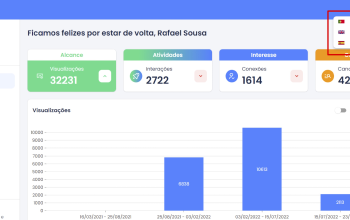The Importance of Context in Localization: Best Practices for Accurate Translations

.webp)
As businesses expand their reach to global audiences, localization becomes crucial to ensure their message reaches the target market accurately. However, translating content accurately can be challenging, especially when context is not considered. In this article, we will explore the importance of context in localization and how some context features can help improve translation accuracy.
Understanding Context in Localization
Context plays a crucial role in accurately translating content. It refers to the circumstances, conditions, or background surrounding a word or phrase that contributes to its meaning. Without proper context, translators may misunderstand the intended message, leading to an inaccurate translation. Some situations where context is particularly important include idiomatic expressions, cultural references, and technical terms.
Examples
- Inaccurate translations: Without context, translators may misinterpret the meaning of a phrase, resulting in a less accurate translation. For example, if a software application has a button with the label "ship" a translator without context might translate it to German as "Schiff" (large boat for transporting people) instead of "versenden" (send / transport) leading to confusion for the user.
- Cultural insensitivity: Without context, translations may be culturally insensitive or even offensive. For example, a literal translation of a phrase or idiom in one language may not make sense or be considered offensive in another language.
- Inconsistent terminology: Without context, translators may use inconsistent terminology, resulting in confusion for users. For example, if a software application uses different terms to refer to the same feature in different parts of the application, users may have difficulty understanding how to use it.
- Technical errors: Without context, translators may not have the technical knowledge necessary to accurately translate technical terms or phrases. For example, a translator may not understand the technical meaning of a term like "cache" and translate it as "hidden storage" leading to confusion for the user.
Best Practices for Using locize's Context Features
Locize offers several powerful features to help improve translation accuracy: specific context information per segment, InContext view, terminology glossary, and screenshot feature.
Specific context information allows users to add notes, links, and descriptions to provide additional context for each individual key/segment.

The InContext view enables users to connect content from their website directly with their content on their localization project on locize.

The glossary is a lexica that contains terminology to be used or not be used in the translations. It's here to aid translators to use the terms preferred by your organisation.

Using the screenshot feature, users can assign text parts of a screenshot to a specific translation key.

To use the context features effectively, users should provide as much context as possible. This can include providing background information on the product or service, identifying the intended audience, and giving clear instructions to the translation team. Users should also include screenshots or links where necessary, which can provide additional context that is not immediately apparent from the text. It is also important to involve the translation team in the context-gathering process, as they may have valuable insights into the nuances of the language and culture.
Real-World Examples of Improved Translation Accuracy with locize's Context Features
Locize's context features have helped many businesses and organizations improve translation accuracy. For example, a healthcare company used locize's context features to provide additional context for medical terms, resulting in more accurate translations. By providing definitions and explanations of medical terms, translators were able to better understand the intended meaning of the text. A globally leading technology firm used locize's screenshot feature to assign text parts of a screenshot to a specific translation key, resulting in more accurate translations for their website. This allowed translators to see the text in context, which helped them understand the intended meaning. A fintech company used locize's InContext view to connect content from their app with their localization project on locize, resulting in more accurate translations for their service. This helped translators understand how the text would appear in the final product, which allowed them to provide more accurate translations.
Bonus Tip
Check out our Customer Testimonials for more examples of our clients.
Conclusion
Context is critical for accurate translations, and locize's context features offer powerful tools to improve translation accuracy. By using specific context information, InContext view, terminology glossary, and screenshot feature, businesses and organizations can provide translators with the context they need to produce more accurate translations. To get the most out of locize's context features, it's essential to provide as much context as possible, involve the translation team in the context-gathering process, and try out different context-gathering methods to find what works best for your content.
If you like to see how locize looks like, check out this video and try the free trial.

